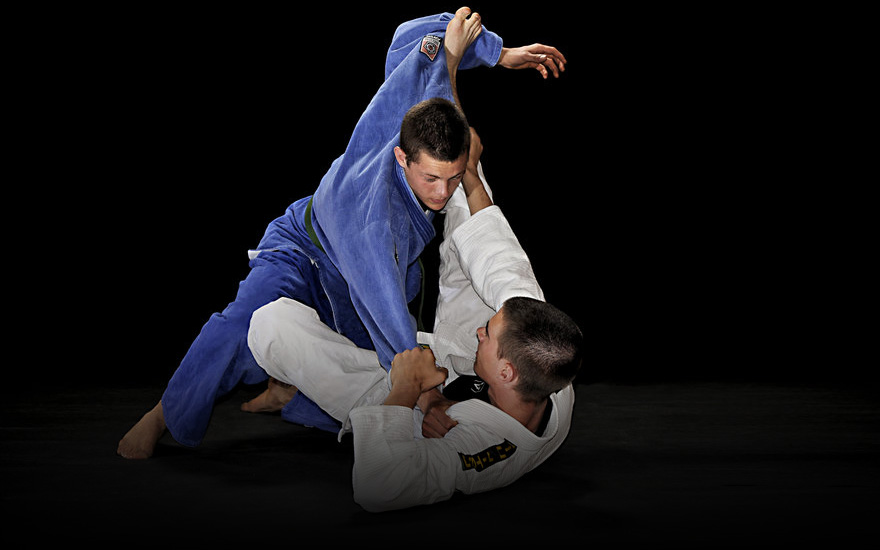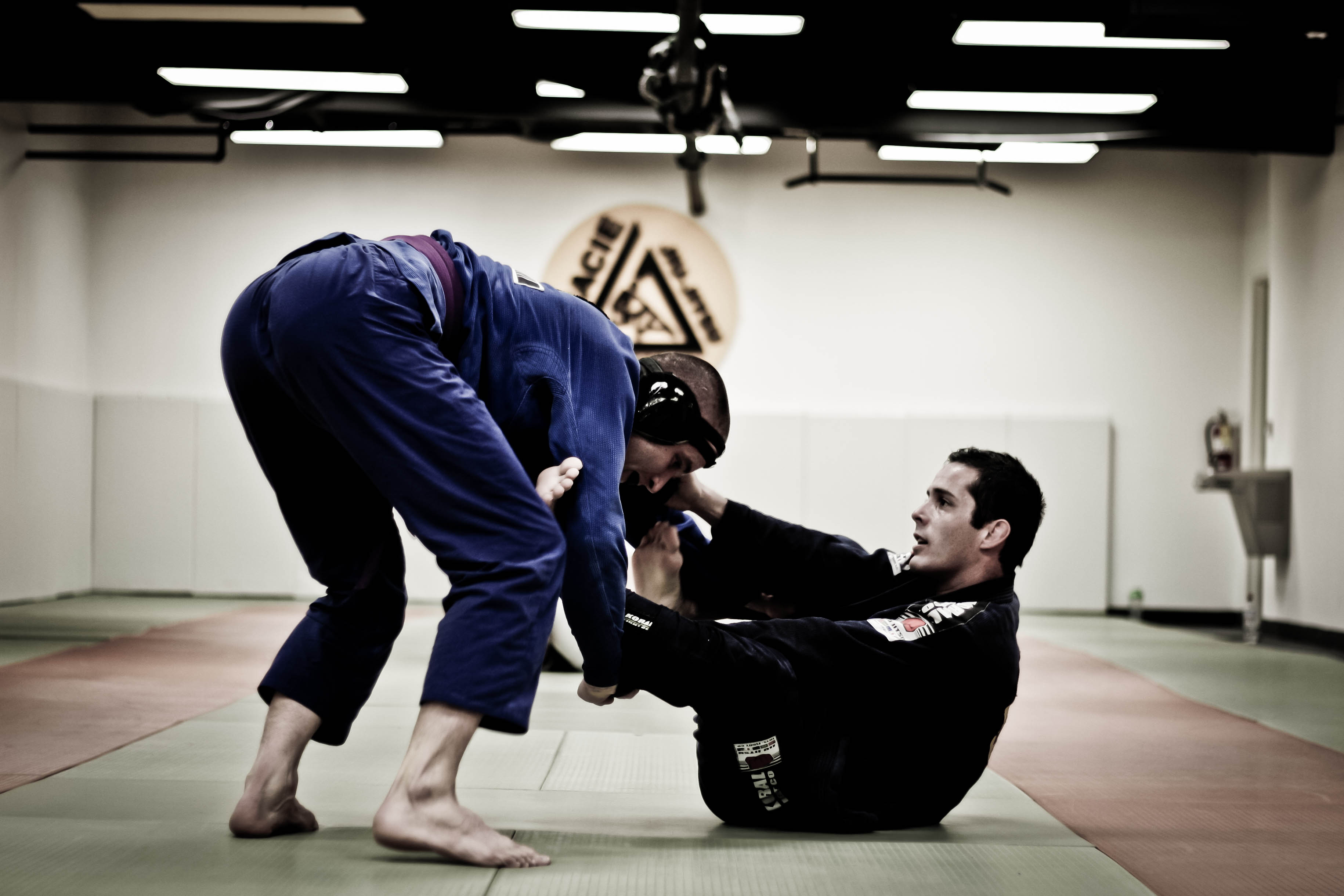Brazilian Jiu-Jitsu
The Brazilian Jiu- Jitsu ( BJJ briefly or Gracie Jiu Jitsu, Portuguese jiu - jitsu brasileiro ) is a modification and development of the Japanese martial art of Kodokan Judo that focuses on ground fighting, are in addition teaches throwing techniques from the state in training.
History
The Brazilian Jiu Jitsu is the South American version of the Kodokan Judo and was developed by the brothers Carlos and Helio Gracie. Carlos Gracie learned the judo by Mitsuyo Maeda, a student of Kano Jigorō and gave it to his younger brother Helio continued. Helio was physically rather frail and could not use many of the traditional Judo techniques. For this reason, he changed the mechanics and leverage many techniques and made them so effective and applicable for the physically weaker people. Helio and Carlos taught their children in Judo and so created the next generation of fighters and teachers who continue to spread the Brazilian Jiu Jitsu and the efficiency of the style in many Vale Tudo challenge matches proven time and again.
In the seventies, one of the sons of Helio, Rorion Gracie came to the U.S. to build a career. He taught the family style in his garage, and slowly also in the U.S. more and more people for this martial art. The early nineties opened Rorion a large Academy in Los Angeles and created together with the advertising man kind Davie, the legendary " Ultimate Fighting Championships " (in short " UFC "). In these competitions, which were "pay- per-view TV " broadcast in the U.S., fought martial artists of various styles without many rules against each other. Goal, the opponent was knocked out to beat or force him to give up. Royce Gracie, son of Helio Gracie was the lightest competitor and still won three of the superior four UFC tournaments. He finished all winning fights by submission. To date, he is the only fighter ever to win four fights in one event.
His fighting style is characteristic for BJJ fighters during an MMA fight to date. Punches and kicks that do not form the main focus at BJJ, can be used tactically in the first place, to cause the opponent to move as a protective reaction an arm or leg, which can be taken then to set up a final lever or strangulation. In the standing position, especially the avoidance of enemy punches and kicks is practiced. To bridge the distance to the opponent as quickly as possible in order to engage him in the ground fighting, BJJ is also typical. Experience with random battles shows that the own risk of injury can be minimized by such fighting behavior, since there are few positions due to the small distance in the bottom layer, where hard blows can be performed. However, it is incorrect to equate with Valetudo BJJ, Mixed Martial Arts or MMA. The Brazilian Jiu- Jitsu focuses on the sporting ground combat without punches and kicks.
A very similar style to the BJJ Brazilian Luta Livre is the (Free Fighting ) - as opposed to BJJ or Judo Gi is not worn while Luta Livre.
Sporty variant
In the sporty variant, fighters compete in different weight and beginners / advanced classes that divided according to the color of the belt fighter. This gradation of the belt in BJJ different from other Japanese belt systems. The colors, from novice to master, are white - blue - purple - brown - black. ( A black belt in general ) are traditionally in the BJJ belt from the champion " awarded " to his students. This is less critical, as long as the person already practicing BJJ, but a " Beltpromotion " ( belt ceremony ) takes place on the basis of success, to get the students in training or competitions. Many schools also awarded for up to four strips per strap, which should be a fine gradation of skills in addition. Theoretically, a higher graduate fighters win (higher belt color or more strips with the same color belt ) down graded against a fighter.
The sporty BJJ Gi battle with generally starts in the state ( punches, kicks, scratching, biting, etc. are forbidden) and will be continued and completed mostly by a so-called " Takedown " on the ground. The fighter has two ways to win the fight. In BJJ fighters receive for certain positions or actions that are beneficial to them or change the flow of battle in their favor points. By way of example, the assumption of the "Mount" - you sit on the chest of the opponent - or a successful " Sweep" - one creates a change from a less favorable position in a better example are called - from supine into the top position. Regardless of the score, there is always the possibility to force the opponent with a " Submission" ( submission ) to the task that this symbolized by tapping with the hand on the mat, his body or the opponent. This can be caused by numerous chokes and joint locks. If none of the fighters after the fight time ( usually 5-10 min), a " Submission" of the opponent, wins the fighter with the most points.










